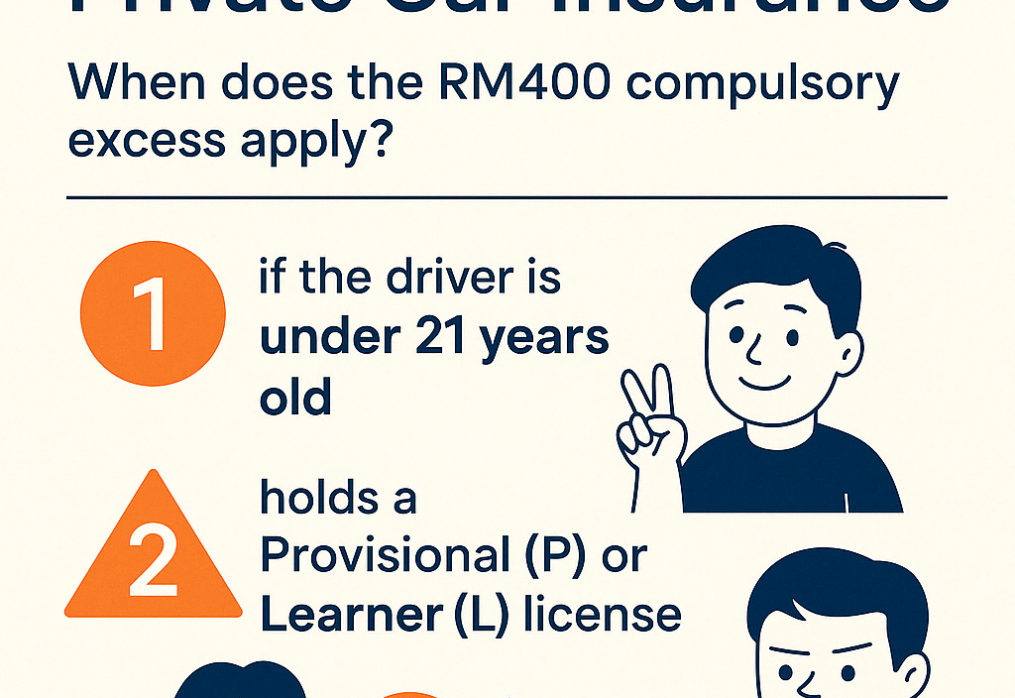What Is Compulsory Excess in Private Car Insurance – And When Does It Apply?
What is “Compulsory Excess”?
If you ever need to make a car insurance claim, excess is the portion of the cost that you, the policyholder, have to pay first before your insurer covers the rest.
Now here’s the twist:
There’s something called “Compulsory Excess” – an additional RM400 you must pay under specific conditions, no matter how good your driving record is.
🚨 When Does the RM400 Compulsory Excess Apply?
This additional charge kicks in if the driver involved in the accident meets any of the following:
1️⃣ Under 21 years old
Young and adventurous? Yes. But also, statistically riskier.
2️⃣ Holds a Provisional (P) or Learner (L) license
These are beginner drivers still under training.
3️⃣ Not named in your policy as a “Named Driver”
If someone drives your car but their name is not listed in your insurance, this rule applies—even if they’re fully licensed.
📷 Refer to this infographic for a quick summary:
👉
💰 Example: How It Affects Your Claim
Let’s say a claim is RM3,000:
-
If compulsory excess applies, your insurer pays RM2,600, and you pay RM400.
-
If not applicable, insurer pays the full RM3,000. You pay RM0.
✅ How to Avoid Paying This Excess?
-
Name additional drivers in your policy (especially children or spouse).
-
Make sure they’re over 21 and fully licensed.
-
Consider adding a Compulsory Excess Waiver if your insurer offers it.
📜 Straight From the Policy:
“We have the right to deduct RM400 if the driver is under 21, holds a P or L license, or is not named as a driver in your schedule.”
(Source: Allianz & Generali Private Car Policy Wording)
👀 Final Thought
Most people only learn about “compulsory excess” after an accident.
Don’t be one of them.
Review your policy today—or better, let us review it for you.

